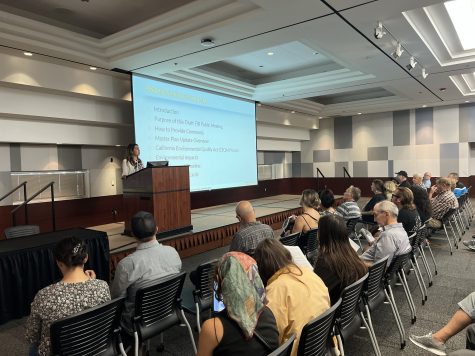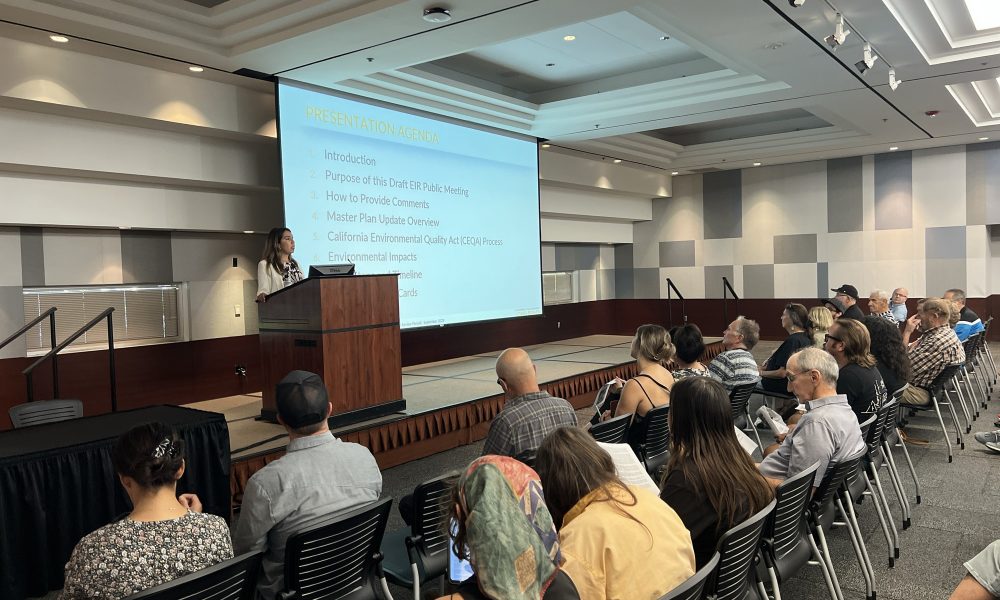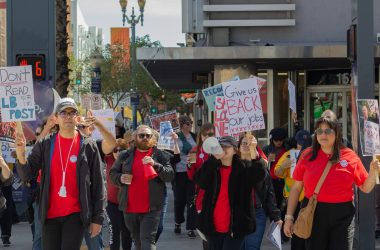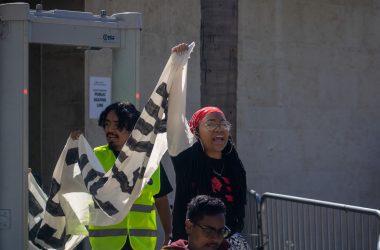On Sept. 13 and 14, CSULB held in-person and Zoom meetings going over some of the details of the Master Plan Environmental Impact Report.
“Planned projects in the Master Plan include renovations of existing buildings, replacement buildings, so a demolition and replacement in place or new construction,” said Melissa Soto, Capital Program Development Design and Construction Services manager said. “There are many buildings that are fine as they are. So those will remain in place.”
According to the California State Lands Commission, the California Environmental Quality Act states that the EIR master plan is meant to inform stakeholders, both public and those making decisions, about the potential impact a project may have on the local environment.
It is also meant to provide alternatives and ways to lessen impact through mitigation measures.
Jeff Cook, Strategic Communications associate vice president, said in an email that mitigation would be used to lessen or eliminate impact on the areas that have been assessed.
The Master Plan was initiated in the fall of 2019. The EIR phase of the projects for the Master Plan began in April of 2022.

“The goal of our plan is to advance our strategic mission guided by our Beach 2030 Strategic effort. As well as to accommodate increased enrollment through 2035,” Soto said.
The proposed 2035 plan will update the current Master Plan which was last updated in 2008.
This new plan has three key elements:
1. Planned enrollment growth that is estimated to be 1% annually.
2. A focus on renovation and replacement buildings rather than expansion projects or expansion of the university as a whole.
3. An adjustment in the sizing of existing housing to house more students and increased housing for faculty and staff.
Multiple areas around the university campus will have construction related activity according to the Master Plan. She broke down the proposed changes at the meeting.
The south district will be focused on relocations, consolidations and renovation projects, such as the University Student Union renovation and expansion project.
The central district will have more open spaces and with one of key projects focused on the Kinesiology building.
The east district will have a College of Engineering replacement building and faculty and staff housing.
The north district, home to the athletics and performance venues, will have gateway improvements and improved pedestrian links.
The west district, where student housing is located, will be focused on the right sizing of Parkside Village housing. This is meant for increased density to fit more students.
Fareeha Kibriya, a Michael Baker International consultant on the project, went over the CEQA EIR report and said the CEQA has 20 environmental factors for impact review.
Michael Baker International provides consultation on engineering and consulting services.
There are four levels of impact determination on the environment:
- No impact, this means no measurable impact on the environment.
- Less than significant impact, this means there is a potential for environmental impact but below established thresholds.
- Less than significant impact with mitigation incorporated, this would mean there is a potential for impact that might be significant and mitigation measures would be implemented to reduce the impact to less than significant.
- Significant and unavoidable impact, this means impact would not be avoided even with inclusion of mitigation measures.
Kibyria said the current Master Plan EIR found the following items fall under less than significant impacts: air quality, greenhouse gas emissions, hydrology and water quality, population and housing, public services and recreation, transportation and utilities and energy.
At a level higher there are items that fall under less than significant impact with mitigation incorporated are: aesthetics, biological resources, cultural resources, geology/soils and paleontological resources, noise, tribal and cultural resources.
In the EIR, one example of mitigation for cultural resources would be about the construction-related impacts on archaeological resources. This would have the project being reviewed by a qualified archaeologist and the curation/disposition of archaeological materials.
For tribal cultural resources, which would have construction-related impacts on known and unknown tribal cultural resources, workers would get worker awareness training and Native American monitoring.
“The term ‘worker awareness’ means equipping those on the job site with requisite knowledge about potential site conditions to take note of, particularly as it relates to tribal cultural resources, and how to respond appropriately. Workers will be made aware of the history or cultural sensitivity of a site before work is begun,” Cook said.
More complete information can be found on the Master Plan’s progress website.




